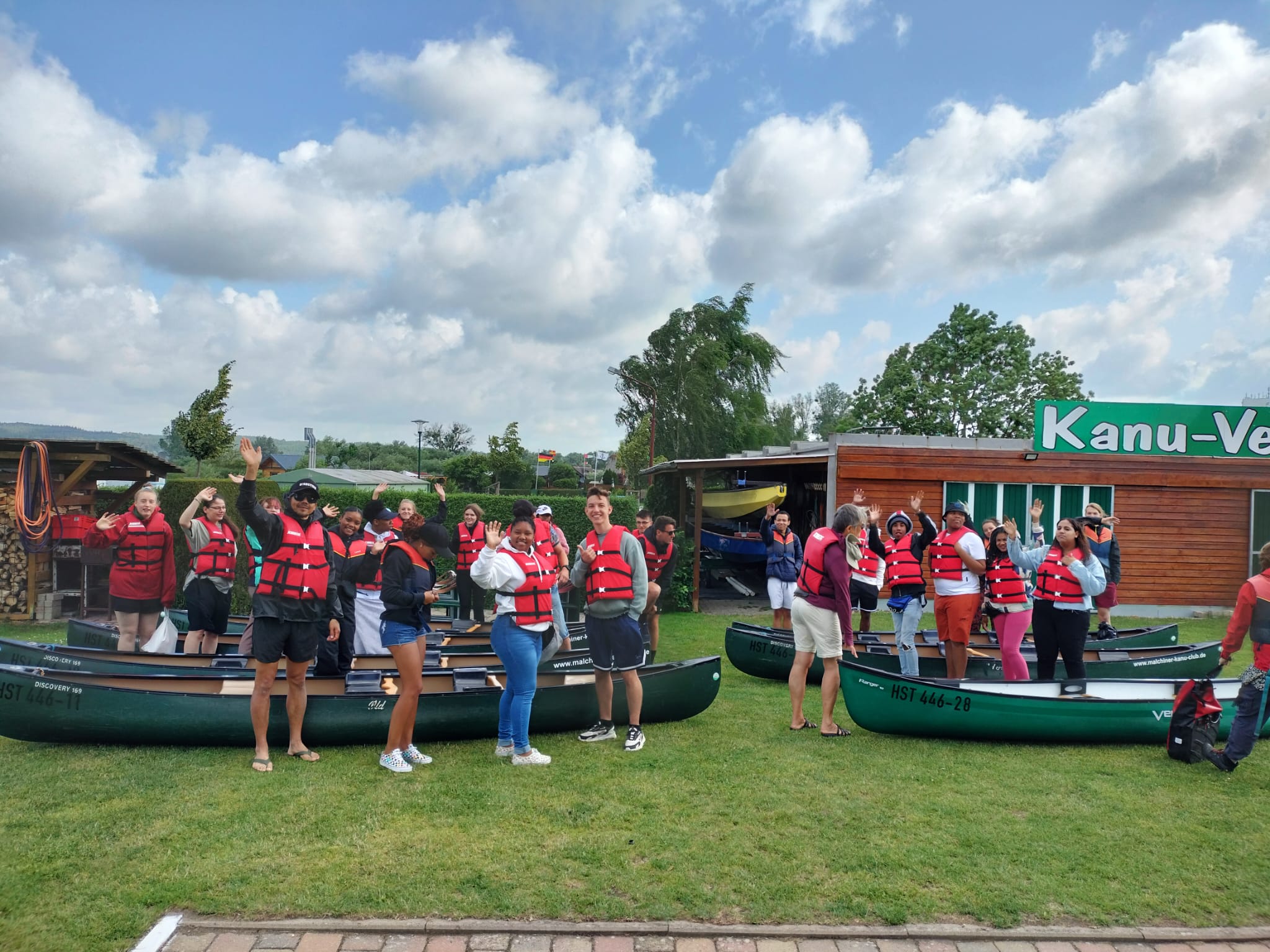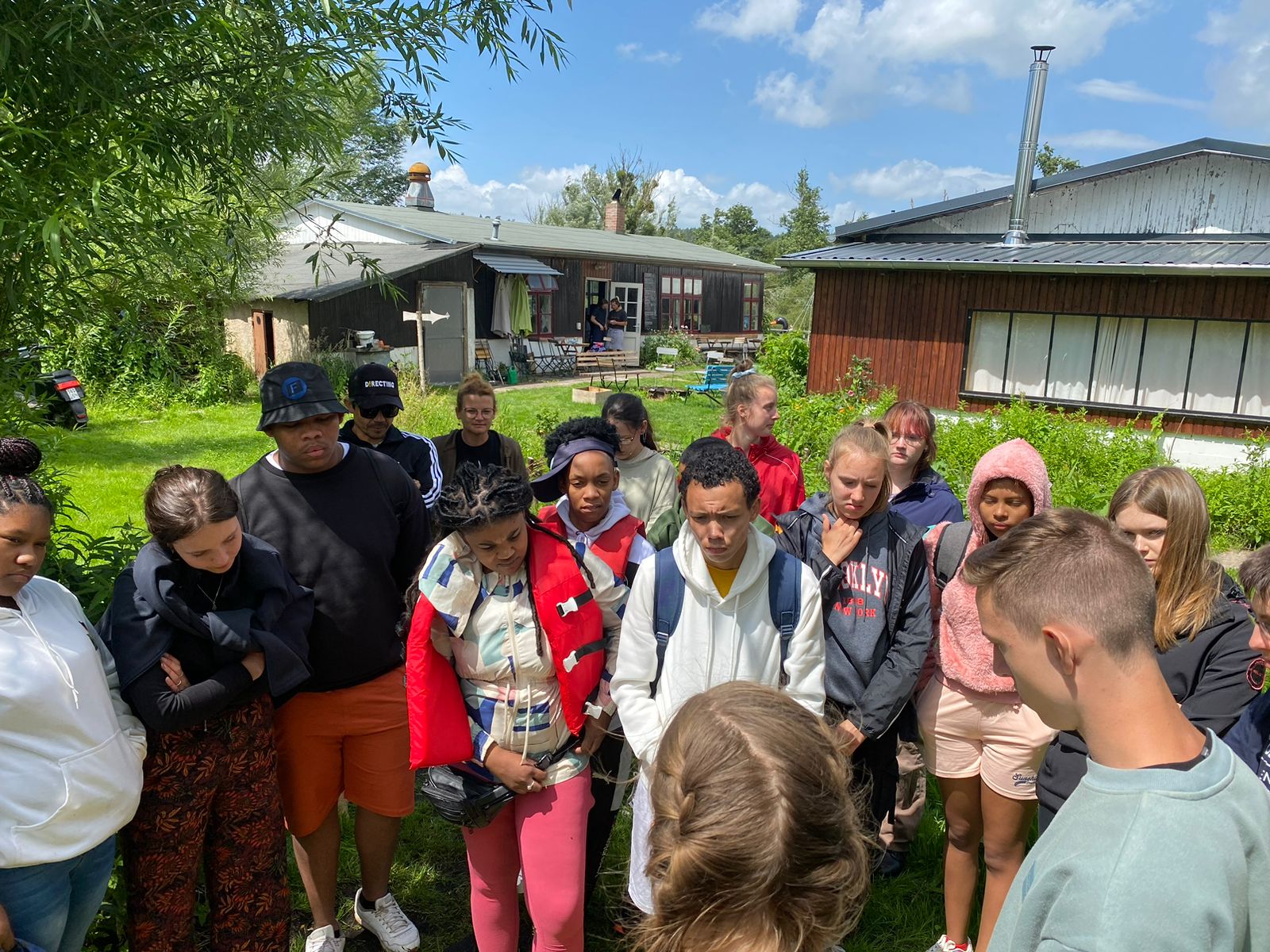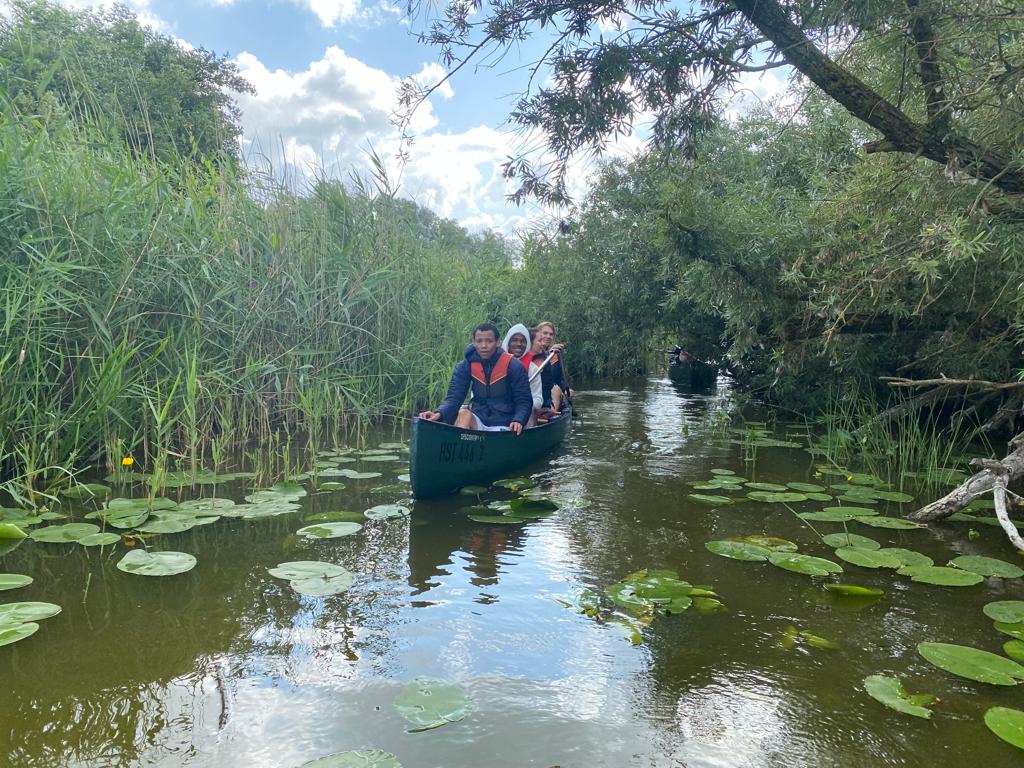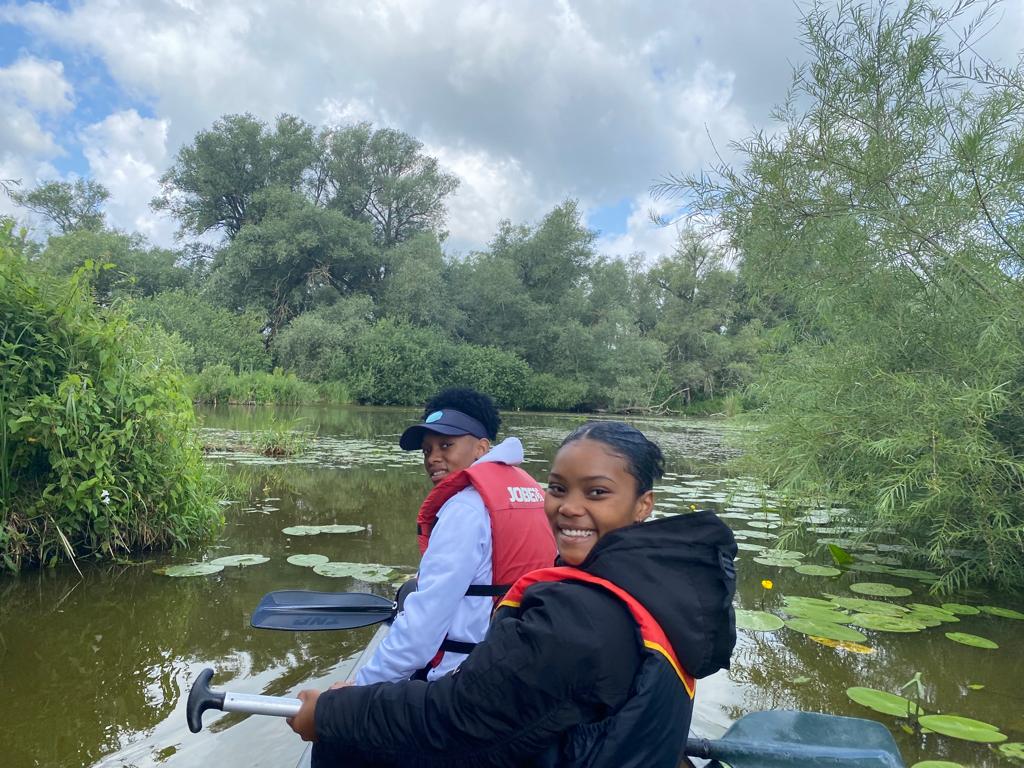July 2nd was the first real day of our project. We paddled with canoes, on the Peene, to the peatland farmer. We saw the beautiful river and some ducks and a snake. There we were able to familiarize ourselves with peatlands and had a small guided tour through the peatland with an expert, so we were able to gather basic knowledge about the peatlands, which was important for the next days. Whe learned what exactly a peatland is and how to identify it, so its basically organic matter which is slowly decomposing in water, which gets exceeded by the production of organic matter, what you can easily identify by the flora and the wet land. Peatlands can be found in the whole world but the biggest are in Russia, Indonesia, Canada, Congo and Northern Europe. We als learned that peatlands are important because of a really big biodiversity, with a lot of tiny microoragnism breaking down dead plants and releasing nutrients supporting the growth of other plants and storing a lot of carbon dioxide, actually more co2, then all forests in the world combined. And that’s also why it is playing a vital role in climate change, then when we damage the peatlands we are also releasing an enormous amount of co2. So we have to protect peatlands and restore peatlands to fight climate change. But that’s not an easy task because restoring peatlands is a very long process, peatlands are only growing 1 milimeter per year, but the most peatlands are several meters deep, so you can imagine how long it takes to restore a peatland. We also learned using peatlands for activities such as extracting peat or draining them for farming can have detrimental effects on these ecosystems. These practices alter the natural water flow, release stored carbon, and cause irreversible damage, like we already said. A more sustainable approach, is paludiculture, it involves cultivating crops without draining the peatlands.
The Expert also told us a story, it was about a kid who liked storcks and was happy about the storcks arriving every year in a nest nearby and eating in the peatlands, but then her family decided to use the peatlands for agriculture and destroyed it. With that the storcks didn’t found the food they were used to find and so the storcks didn’t came there anymore. Therefore the kid was really sad and wanted the storcks back, but the peatland was already destroyed. Happily the peatland wasn’t that destroyed yet and so the family had the chance to restore and so they restored a bit of the area. When the peatland was restored, the storcks came back and the kid was happy again. We think that it is a good story with a happy end that shows us the Importance of peatlands and why we should protect them. We think that solving the challenges related to peatlands requires a comprehensive approach. This includes implementing stricter rules for peat extraction, promoting sustainable land use, and finding alternative livelihood opportunities for those who depend on peatland resources. Additionally, investing in research and monitoring efforts can help us better understand peatland ecosystems and develop effective conservation strategies. By combining conservation, restoration, and sustainable management practices, we can preserve peatlands and the benefits they provide for future generations.
At the peatland farmers place we also had lunch, we ate a tasty lasagna. But when we wanted to paddle back we realized the group was already really tired and the wind was really strong, so we thhought we wouldn’t make it back. But we had an idea, which consisted of calling a friend who owns a boat and asking him to tow us. What we did and so the way back was way faster, easier and more fun, because of the boat towing us. Back at the canoe club where we ranted our canoes, we had to clean them and afterwards we met at Mathilda’s place and had a little party together.
Richard and Anzio



